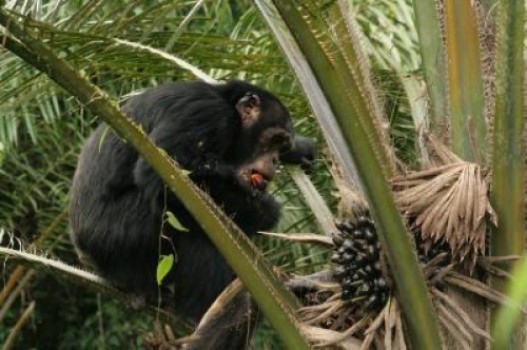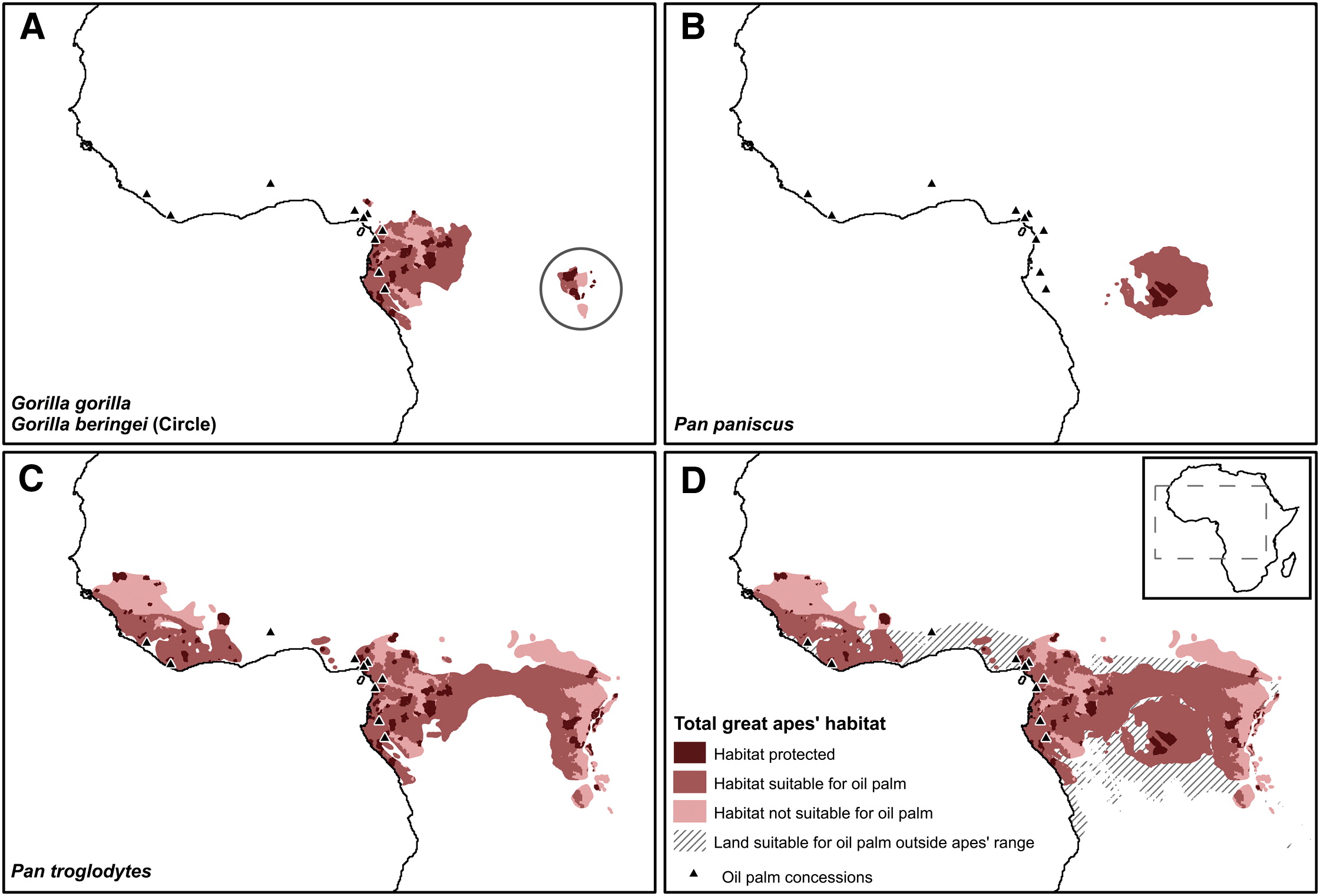The following is a ScienceDaily.com Featured Research article, dated July 10 and with the title above:
The vegetable oil found in your popcorn or soap might not be ape friendly, and the situation appears likely to get even worse, according to an analysis in the Cell Press journal Current Biology on July 10. The growing demand for vegetable oil has already led to the conversion of Southeast Asian forest into oil palm plantations, bringing trouble for orangutans in particular. If guidelines are not put in place very soon, researchers say the spread of those large-scale industrial plantations from Asia into Africa will be bad news for great apes there as well.
“The first step is to get this issue on the forefront of public awareness and on the agenda of companies active in Africa and governments, both in and outside of Africa,” says Serge Wich of Liverpool John Moores University. “Public awareness is key, as consumers have influence through their purchasing behavior.”
Oil palm concessions that have already been given to companies for production in Africa show almost 60% overlap with the distribution of great ape species, the new analysis finds. Of the area suitable for growing oil palm in Africa, there is a 42% overlap with great ape habitat.
Palm oil is found in a large number of products, from popcorn to candy to soap to cosmetics, making growth of the tropical trees a very lucrative industry. But, at least for Wich, the downsides associated with oil palm demand have been particularly apparent. “Working in Indonesia during the past two decades has given me first-hand experience of the extremely rapid oil palm development, for which large areas of forest have been cleared,” he says. “Now that companies are looking to Africa, we wanted to determine how large the potential threat to African ape species is.”
The new analysis shows that the oil palm industry presents a significant threat to apes all across Africa. The problem could be particularly acute in some countries, including Gabon, Congo, and The Democratic Republic of Congo, which is the only home to the peaceful chimpanzee relatives known as bonobos. In each of those nations, approximately 80% of the area suitable for oil palm growth overlaps with ape habitat.
“There is an urgent need to develop guidelines for the expansion of oil palm in Africa to minimize the negative effects on apes and other wildlife,” Wich and colleagues write. “There is also a need for research to support land use decisions to reconcile economic development, great ape conservation, and the avoidance of carbon emissions.”
For people looking to do something about the palm oil problem themselves, now is the time to start, the researchers say. “The general public should try to push the companies they buy goods from to use sustainable oil palm,” Wich says, noting that some products now carry a GreenPalm logo. “If consumers do buy a product with palm oil in it and no label, they should email, call, or otherwise contact the company to ask them to start using sustainable palm oil and tell them they will not continue to buy their product until it is labeled to indicate this.”
Editor’s note: Also see the June 7, 2014 article, “The Dark Side of Doughnuts.” Many thanks to Linda Norrington for suggesting this material.




